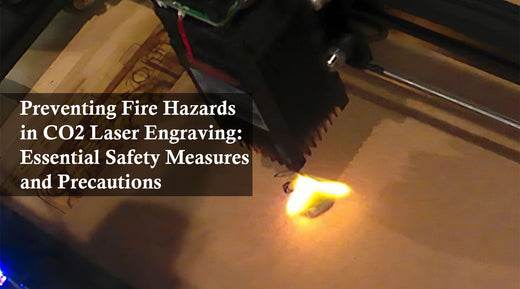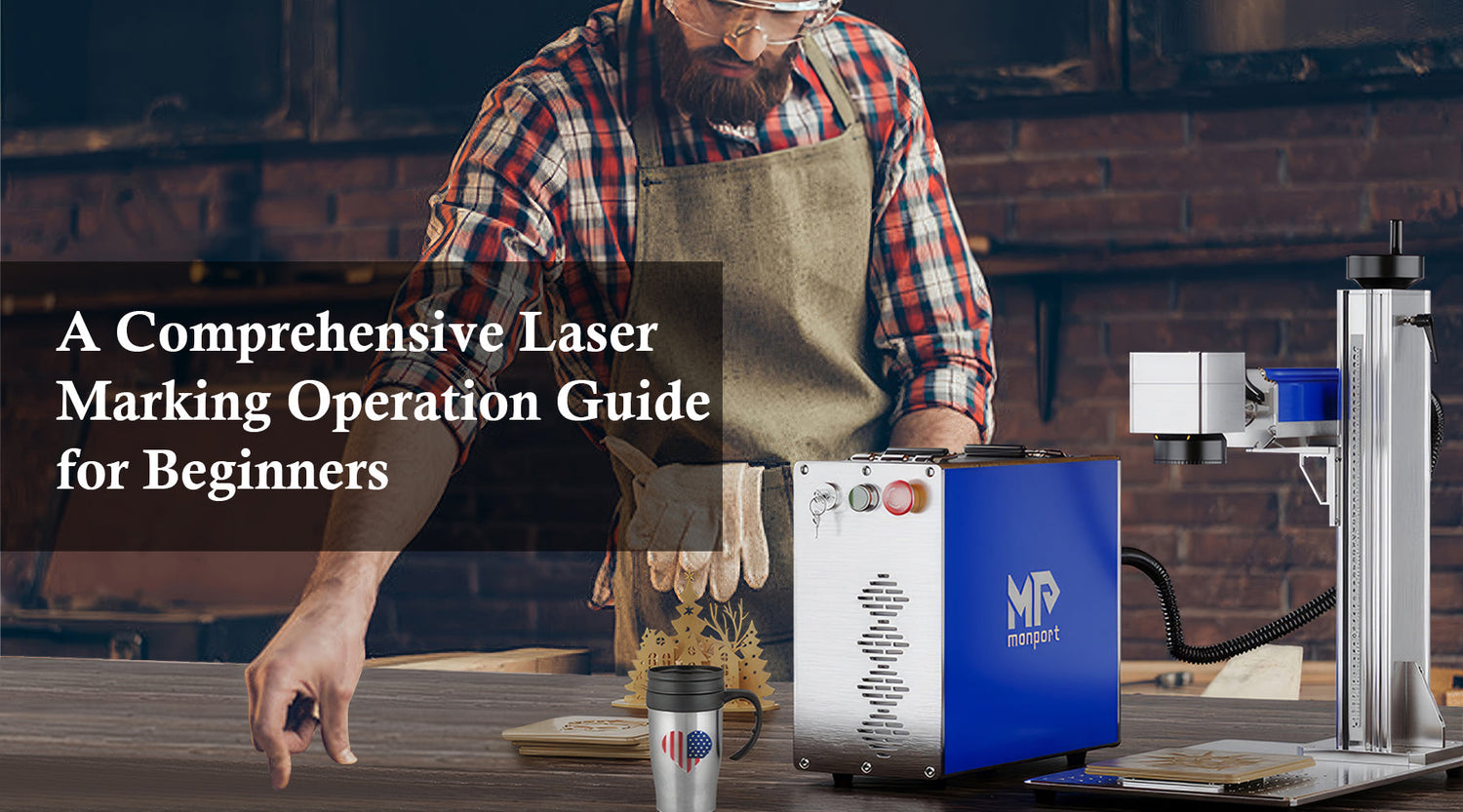Many engraving enthusiasts and professionals spend 4-5 hours daily working with laser engravers, often unaware of the potential hazards posed by prolonged exposure to laser radiation. This lack of awareness can lead to irreversible occupational health issues for those on site. This article aims to shed light on the dangers associated with laser use and how to protect against them. Lasers are not inherently dangerous; with the right precautions, they can be used safely, especially when working with materials like black laser marking spray that may require additional safety measures. Whether you're a hobbyist, a professional, or a woodworking engraver, it's crucial to understand the risks and learn how to protect yourself from laser hazards.

Take control of your safety and productivity—use BESTMP10 at checkout – click here to shop
What would be the most common laser hazard to a laser user?
Eye Damage:
Eye injury is the primary concern when dealing with lasers. Beam damage can be categorised into three forms:
- Thermal: This is the result of heat being generated and absorbed by the exposed area, leading to eye burns.
- Photochemical: Certain wavelengths can induce chemical reactions in tissues, potentially causing cataracts, corneal or retinal burns, and increasing the risk of skin cancer.
- Mechanical: High-intensity laser beams can cause instant protein coagulation or vaporization, damaging biological tissues. The eyes are particularly vulnerable, with the retina being 105 times more sensitive due to its focusing effect, making even low doses of laser exposure potentially damaging and capable of causing severe vision impairment or blindness.

Because of the eye's focusing effect, even weak external light entering the eye can be concentrated, increasing its energy density and thus its damaging effect. Infrared light emitted by lasers poses significant risks to the retina, potentially causing burns that can lead to vision loss or blindness. Laser beams entering the pupil penetrate the lens and focus onto the retina, precisely on the macular area, the most sensitive part of the retina. Damage to this area results in a permanent blind spot in the central field of vision.
Due to the invisibility of infrared light, the eye cannot respond by closing in time, allowing continuous laser exposure into the pupil, causing more significant damage than visible light. Therefore, wearing protective goggles is essential during laser processing operations, especially for those working with woodworking engravers, and full-body protection is recommended whenever possible.
In dimly lit rooms, the pupil dilates to admit more light for clearer vision. If laser radiation is present in such dim visible light environments, the increased laser entering the eye can result in more severe eye damage. Therefore, workstations and protective rooms should maintain adequate lighting to prevent increased eye damage, particularly when using materials like black laser marking spray that may produce additional light reflections.

Skin Damage
Laser exposure can cause severe skin injuries, including burns, rashes, blisters, pigment deposition, and even complete destruction of subcutaneous tissue. Different wavelengths can penetrate skin tissues to varying depths: woodworking engravers often use specific wavelengths that may pose particular risks to the skin, so it is important to take proper precautions when operating lasers.
- At 400nm, penetration into skin tissues does not exceed 1mm, reaching the dermal layer.
- At 514nm, penetration ranges approximately 0.5mm to 2mm.
- At 630nm, penetration ranges approximately 1mm to 6mm.
- Infrared light at 1070nm can penetrate through the epidermis, dermis, and into subcutaneous tissues.

How to avoid laser injuries?
With the risks to both eyes and skin clearly outlined, it becomes crucial to implement effective protective measures to mitigate these dangers. By adopting the right safety protocols and utilizing appropriate protective gear, workers, including those using woodworking engravers, can significantly reduce their risk of harm. The following sections will detail specific protective strategies for safeguarding against laser-related injuries, ensuring that both eye and skin protection are adequately addressed.
Eye Protection:
- a) If there is a possibility of laser exposure exceeding safe limits, it is crucial to use protective eyewear with appropriate optical density based on the laser's wavelength to enhance eye protection.
- b) Do not rely solely on protective goggles; even when wearing them, avoid looking directly at the laser beam.

Skin Protection:
- a) Wear long-sleeved work clothing made of flame-resistant materials.
- b) In laser-controlled areas, install curtains and light-blocking panels made of flame-resistant materials with surfaces coated in black or blue silicon to absorb ultraviolet radiation and block infrared radiation.
Choosing Laser Protective Clothing:
- a) Whenever possible, provide appropriate protective clothing to workers exposed to radiation levels exceeding the skin's Maximum Permissible Exposure (MPE) value.
- b) Protective clothing should be made from suitable fire-resistant and heat-resistant materials.
- c) Ensure that protective clothing minimizes skin exposure.

Conclusion
Whether you're a hobbyist, a professional, or a woodworking engraver, understanding and applying these safety measures will help you enjoy the benefits of laser technology while minimizing risks. Remember, with the right precautions, lasers can be used safely and effectively in a variety of applications, including when working with materials like black laser marking spray. Stay informed, stay protected, and prioritize safety in all your laser operations.
Ready to engrave safely? Take the next step and protect yourself with the best gear. Use BESTMP10 at checkout – click here to shop!










